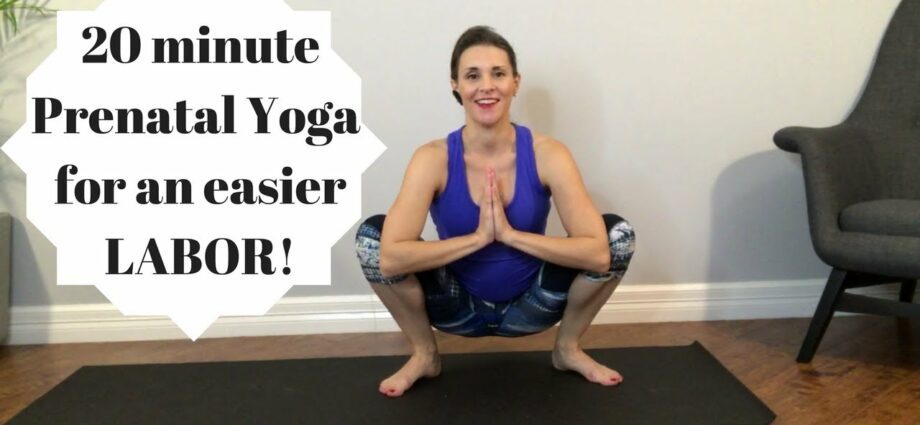Contents
Prenatal yoga to prepare for childbirth
What is prenatal yoga?
Prenatal yoga helps pregnant women to live their pregnancy harmoniously, to relieve their ailments and to prepare them for childbirth. Classes usually start from the second trimester and can continue until the end. They make it possible to harmonize the body and the mind of the pregnant woman, thus creating all the conditions for a serene childbirth.
Thanks to the expertise, support and listening of prenatal yoga teachers, pregnant women can prepare themselves over the months for the physical (weight gain, etc.) and psychological (mood, emotions, stress) changes caused by their pregnancy. In particular, she will be able to learn to trust and listen to herself in order to prepare for the birth.
In addition, it connects the pregnant woman and her baby from pregnancy through the deep breath and well-being.
What types of yoga to practice when you are pregnant?
The basis of Prenatal Yoga is Hatha yoga. In this type of yoga, each posture is adapted to the pregnant woman.
The method of Doctor Bernadette de Gasquet is particularly suitable for pregnant women and safe because it takes into account all the physiology of pregnancy. The teachers trained in his institute can then put a personal touch (by integrating Vinyasa yoga for example, which means “yoga flow”). The release of hormones during pregnancy can make you feel more supple than usual. You must therefore be careful not to force, and take the time to make movements in accordance with your breathing.
The benefits of prenatal yoga: physical and mental preparation for the big day
Prenatal yoga has many benefits, during pregnancy it allows:
- Strengthen the legs in order to better carry the rest of the body.
- Make the perineum flexible and strengthen the pelvic floor, which makes it possible, for example, to avoid episiotomy, and the disadvantages of following diapers such as urine leakage. In addition, the mother will be able to recover strength in her perineum more easily if she works it during her pregnancy.
- Relieve back pain that can cause pregnancy, such as lower back pain
- Relieve sciatica related to pregnancy.
- Relax the whole nervous system of the future mother who has to deal with several sources of fatigue and stress. In utero, it also helps the baby to relax.
- Strengthen the immune system by stimulating the endocrine system through certain positions.
- Keep balance despite the change in the center of gravity of the future mother.
- Deliver gestures simple in order to allow the pregnant woman to sit, get up, lie down, carry objects etc, so that she feels more “actor” of her body.
- Create the link with the baby in utero by including him in exercises thanks to mediations and certain positions (such as placing his legs against a wall for example).
- Strengthen the confidence of the future mother in this change of life. This will be done with the help of exercises allowing him to better listen to himself, to become aware of his body and his deep intuition. These exercises will aim to create harmony between her baby and herself.
- Transmit knowledge on the importance of relaxation in the natural physiological process of childbirth, the best friend of which is deep breathing and letting go
When you feel prepared, the ordeal of childbirth can seem a lot less stressful. Prenatal yoga is therefore a good ally since it also helps the expectant mother to live this experience consciously and independently.
Contraindications to the practice
Prenatal yoga is for all pregnant women. But if you notice any of these symptoms during your session, it is recommended that you seek immediate medical attention:
- Vaginal bleeding
- Hypertension artérielle
- Shortness of breath higher than usual
- Dizziness or discomfort
- Uterine contractions
- Chest pain
- Leakage of fluid from the vagina
- Elevated heart rate (rapid pulse)
- Difficulty walking
Prenatal yoga training
One of the best-known training courses in prenatal yoga is the De Gasquet Bernadette training course in Paris (75). This training offers two types of courses: one that begins at the beginning of pregnancy and another that begins from the 6th month of pregnancy until childbirth. This training offers breathing exercises, stretching etc. There are other trainings:
The Himagoya Institute offers internships and prenatal yoga training in Paris (75)
The Perinatal Yoga and Yoga Doula training takes place in 166 hours and is carried out by Gurujagat Kaur according to the approach of Yogi Bhajan. It is issued in Saint Pierre de Maillé (86).
The specialist’s opinion
I have been practicing Yoga for over 20 years and practiced it during my 2 pregnancies. I had two physiological deliveries with my 3,4kg and 4,4kg babies! Thanks to prenatal yoga, I was able to feel prepared and serene.
Pregnant, I was able to practice and teach yoga, listening kindly to my own body and that of my students, who each had different realities. I often offer a mini workshop / speaking tour ½ hour before class so that my students can express themselves and respect each other’s fears and expectations.
The most important thing is to know the mechanisms of the body. With this knowledge, a pregnant woman can make the most appropriate choices and be independent during pregnancy and childbirth. Prenatal yoga allows you to experience and know these choices in order to fully prepare for pregnancy and the ordeal of childbirth.
It is possible to have a harmonious birth, and it is wrong to believe that one is obliged to “give birth in pain”. The birth is an adventure which concerns all the actors, that it is the mother, her (her) partner and the baby.
Listen to yourself. Listen to the sound of the wind, the water. Go see beautiful things. Eat well, food is the only real medicine. Rest. Do you like to. Respect yourself.










